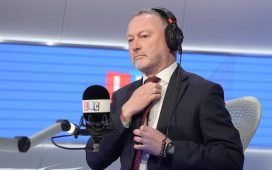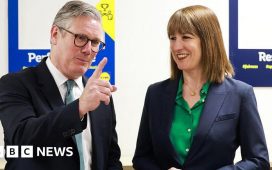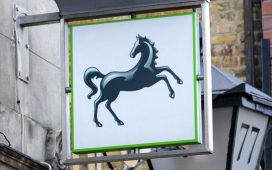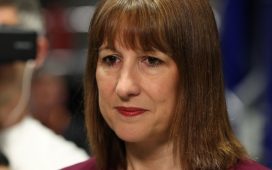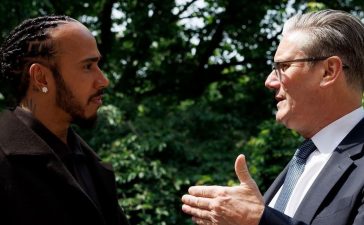The UK government suffered a double economic blow on Wednesday as annual public borrowing came in almost £15bn more than expected and private sector activity contracted at the fastest pace in more than two years.
The borrowing figures put pressure on chancellor Rachel Reeves to raise taxes in her autumn Budget to balance the books just as Wednesday’s PMI data, a measure of the health of the private sector, showed that businesses are struggling.
The shortfall between government income and spending was £151.9bn in the 12 months to March, the Office for National Statistics said, an overshoot of more than 10 per cent on the £137.3bn forecast just a month ago by the Office for Budget Responsibility, the fiscal watchdog.
The S&P Global flash UK PMI composite output index fell to a 29-month low of 48.2 in April from 51.5 in March. The reading was below the 50.4 forecast by economists polled by Reuters and indicated a contraction from the previous month.
The figures came as the IMF warned that Reeves — who is attending the annual meetings of the fund and World Bank in Washington — might need to tee up further tax rises or spending cuts to bear down on public borrowing.
Speaking before the data releases, Vítor Gaspar, director of the IMF’s Fiscal Affairs Department, told the Financial Times that Britain had made “sizeable efforts” to curb its deficit.
But “if there are any adverse [economic] shocks, contingency measures may be needed, which could be either revenue- or expenditure-based”, he added.
UK public borrowing in the year to March was also £20.7bn more than in the same 12-month period a year earlier and the third-highest level of borrowing on record for a full fiscal year.
“This raises the chances that if the chancellor wishes to stick to her fiscal rules, more tax hikes in the autumn Budget will be required,” said Ruth Gregory at the consultancy Capital Economics.
Reeves, who used her last Budget to increase taxes paid by employers from this month, has a self-imposed rule that day-to-day spending must be covered by revenues by 2029-30.
Chris Williamson, chief business economist at S&P Global Market Intelligence, said the biggest concern highlighted by the business activity figures “lies in a slump in exports amid weakened global demand and rising global trade worries”.
US President Donald Trump’s tariffs target Britain, along with many other countries, with 10 per cent across-the-board duties and higher levels on steel and cars.
The survey also indicated that the month’s increase in NI contributions, together with a rise in the minimum wage, helped push business costs up at the fastest pace in two years.
“While recent months have been characterised by UK businesses treading water, broadly stagnating since last autumn’s Budget, businesses are reporting more of a struggle to keep their heads above water in April,” Williamson said.
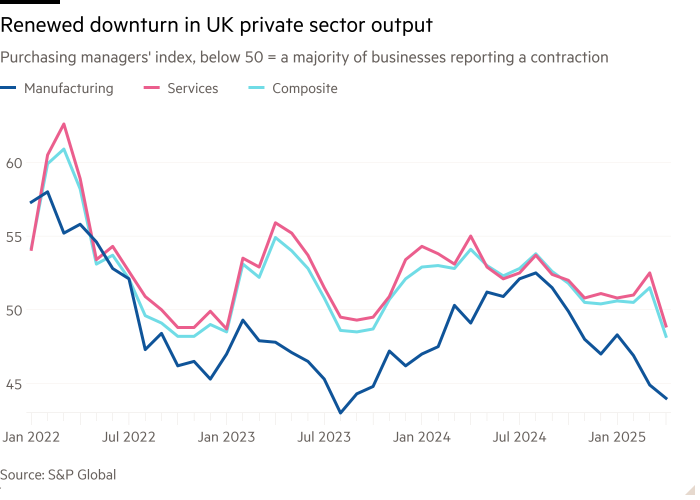
Wednesday’s figures showed that the UK’s manufacturing export sales fell at the fastest pace since February 2009, aside from during the Covid-19 pandemic, reflecting rising trade tensions.
The index for the services sector, which is less reliant on global demand, fell to a 27-month low of 48.9.
While not a reliable measure of GDP, the PMI figures indicate that the economy contracted in April, after beating expectations with a 0.5 per cent rise in February.
On Tuesday, the IMF cut its 2025 growth forecast for the UK to 1.1 per cent, down from its previous estimate of 1.6 per cent, warning of widespread economic disruption from trade tensions.
The UK’s borrowing costs and deteriorating economic prospects have put further pressure on the country’s public finances. Reeves’ room for manoeuvre against her day-to-day spending rule is historically small at £9.9bn, according to the OBR.
ONS chief economist Grant Fitzner said the rise in public sector borrowing appeared to be “largely due to inflation-related costs, including higher pay and benefit increases” and had come despite a “substantial” boost in income.
Public sector borrowing for March was £16.4bn, marginally above the £16bn expected.
But Wednesday’s figures also showed that the UK’s current budget deficit, which reflects borrowing to fund day-to-day public sector activities, was £74.6bn for the last fiscal year, £13.9bn higher than the OBR forecast last month.
Darren Jones, chief secretary to the Treasury, said the government was “going through every penny of taxpayer money spent, line by line, for the first time in 17 years to tear out waste”.
The ONS said public sector spending in the 12 months to March had risen £56.8bn from the previous fiscal year, with higher expenditure on public services, benefits and debt.
The UK’s Debt Management Office said on Wednesday that it planned to increase its debt sales for 2025-26 by £5bn, compared with what it laid out in Reeves’ Spring Statement, taking the total net financing requirement to £309bn.
After a surge in long-term borrowing costs and calls for the DMO to scale back its long-term debt issuance, it said it would fund the extra through an increase to short-term Treasury bills, and also reduced the proportion of long-term gilts that it plans to sell.
Long-term debt rallied, pushing the 30-year UK gilt yield — which hit its highest level since 1998 earlier this month — down 0.13 percentage points to 5.24 per cent.
In its fiscal monitor, published on Wednesday, the IMF listed the UK as one of the “key contributors” to rising global government debt, alongside countries including China, France, Brazil and the US.
Gaspar said the goal of stabilising public debt remained “challenging” because of demands for higher public spending and investment.
If needed, extra policy measures could entail efforts to broaden the tax base, including changes to property taxation or paring back exemptions to VAT, he said, as well as measures to curb spending growth.
“It’s always a combination of spending rationalisation and tax, for example base-broadening,” he said. The nature of the adjustment is a “political decision”, he added, insisting that the fund was simply identifying potential options.
Additional reporting by George Parker and Ian Smith in London


